Bruce A. Bassett
Critical Learning Periods: Leveraging Early Training Dynamics for Efficient Data Pruning
May 29, 2024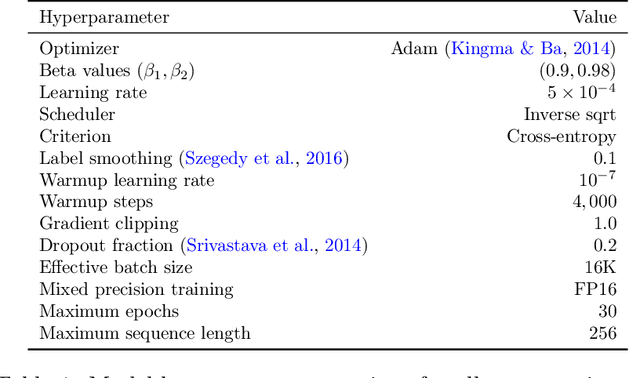
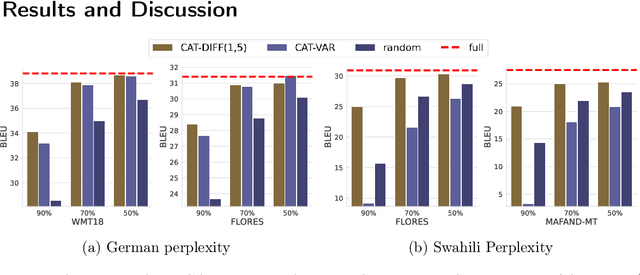
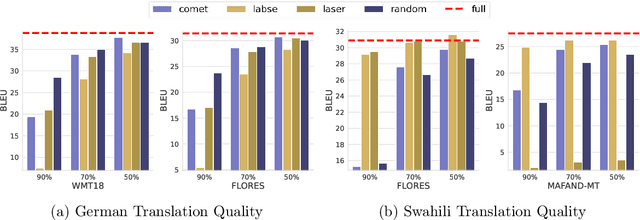

Abstract:Neural Machine Translation models are extremely data and compute-hungry. However, not all data points contribute equally to model training and generalization. Data pruning to remove the low-value data points has the benefit of drastically reducing the compute budget without significant drop in model performance. In this paper, we propose a new data pruning technique: Checkpoints Across Time (CAT), that leverages early model training dynamics to identify the most relevant data points for model performance. We benchmark CAT against several data pruning techniques including COMET-QE, LASER and LaBSE. We find that CAT outperforms the benchmarks on Indo-European languages on multiple test sets. When applied to English-German, English-French and English-Swahili translation tasks, CAT achieves comparable performance to using the full dataset, while pruning up to 50% of training data. We inspect the data points that CAT selects and find that it tends to favour longer sentences and sentences with unique or rare words.
Towards hate speech detection in low-resource languages: Comparing ASR to acoustic word embeddings on Wolof and Swahili
Jun 01, 2023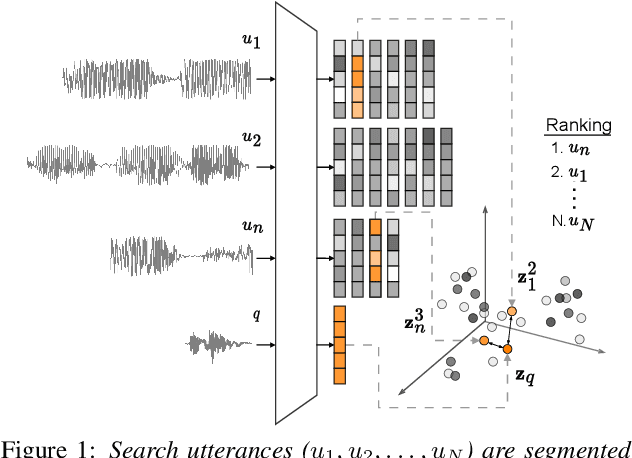
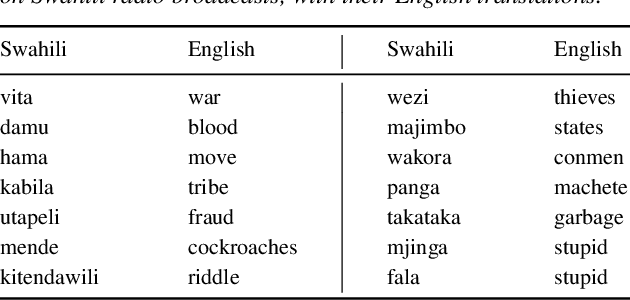

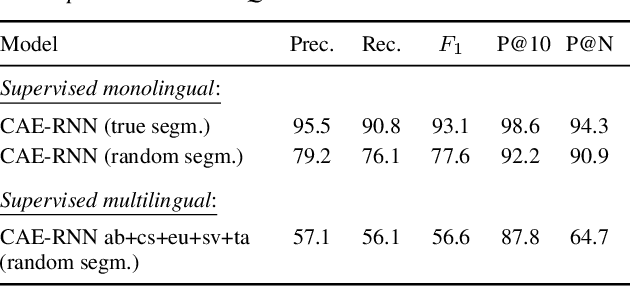
Abstract:We consider hate speech detection through keyword spotting on radio broadcasts. One approach is to build an automatic speech recognition (ASR) system for the target low-resource language. We compare this to using acoustic word embedding (AWE) models that map speech segments to a space where matching words have similar vectors. We specifically use a multilingual AWE model trained on labelled data from well-resourced languages to spot keywords in data in the unseen target language. In contrast to ASR, the AWE approach only requires a few keyword exemplars. In controlled experiments on Wolof and Swahili where training and test data are from the same domain, an ASR model trained on just five minutes of data outperforms the AWE approach. But in an in-the-wild test on Swahili radio broadcasts with actual hate speech keywords, the AWE model (using one minute of template data) is more robust, giving similar performance to an ASR system trained on 30 hours of labelled data.
Very Low Resource Sentence Alignment: Luhya and Swahili
Oct 31, 2022



Abstract:Language-agnostic sentence embeddings generated by pre-trained models such as LASER and LaBSE are attractive options for mining large datasets to produce parallel corpora for low-resource machine translation. We test LASER and LaBSE in extracting bitext for two related low-resource African languages: Luhya and Swahili. For this work, we created a new parallel set of nearly 8000 Luhya-English sentences which allows a new zero-shot test of LASER and LaBSE. We find that LaBSE significantly outperforms LASER on both languages. Both LASER and LaBSE however perform poorly at zero-shot alignment on Luhya, achieving just 1.5% and 22.0% successful alignments respectively (P@1 score). We fine-tune the embeddings on a small set of parallel Luhya sentences and show significant gains, improving the LaBSE alignment accuracy to 53.3%. Further, restricting the dataset to sentence embedding pairs with cosine similarity above 0.7 yielded alignments with over 85% accuracy.
Learning to Detect Interesting Anomalies
Oct 28, 2022Abstract:Anomaly detection algorithms are typically applied to static, unchanging, data features hand-crafted by the user. But how does a user systematically craft good features for anomalies that have never been seen? Here we couple deep learning with active learning -- in which an Oracle iteratively labels small amounts of data selected algorithmically over a series of rounds -- to automatically and dynamically improve the data features for efficient outlier detection. This approach, AHUNT, shows excellent performance on MNIST, CIFAR10, and Galaxy-DESI data, significantly outperforming both standard anomaly detection and active learning algorithms with static feature spaces. Beyond improved performance, AHUNT also allows the number of anomaly classes to grow organically in response to Oracle's evaluations. Extensive ablation studies explore the impact of Oracle question selection strategy and loss function on performance. We illustrate how the dynamic anomaly class taxonomy represents another step towards fully personalized rankings of different anomaly classes that reflect a user's interests, allowing the algorithm to learn to ignore statistically significant but uninteresting outliers (e.g., noise). This should prove useful in the era of massive astronomical datasets serving diverse sets of users who can only review a tiny subset of the incoming data.
COMET-QE and Active Learning for Low-Resource Machine Translation
Oct 27, 2022Abstract:Active learning aims to deliver maximum benefit when resources are scarce. We use COMET-QE, a reference-free evaluation metric, to select sentences for low-resource neural machine translation. Using Swahili, Kinyarwanda and Spanish for our experiments, we show that COMET-QE significantly outperforms two variants of Round Trip Translation Likelihood (RTTL) and random sentence selection by up to 5 BLEU points for 20k sentences selected by Active Learning on a 30k baseline. This suggests that COMET-QE is a powerful tool for sentence selection in the very low-resource limit.
Low-Resource Neural Machine Translation for Southern African Languages
Apr 03, 2021



Abstract:Low-resource African languages have not fully benefited from the progress in neural machine translation because of a lack of data. Motivated by this challenge we compare zero-shot learning, transfer learning and multilingual learning on three Bantu languages (Shona, isiXhosa and isiZulu) and English. Our main target is English-to-isiZulu translation for which we have just 30,000 sentence pairs, 28% of the average size of our other corpora. We show the importance of language similarity on the performance of English-to-isiZulu transfer learning based on English-to-isiXhosa and English-to-Shona parent models whose BLEU scores differ by 5.2. We then demonstrate that multilingual learning surpasses both transfer learning and zero-shot learning on our dataset, with BLEU score improvements relative to the baseline English-to-isiZulu model of 9.9, 6.1 and 2.0 respectively. Our best model also improves the previous SOTA BLEU score by more than 10.
Deep Evolution for Facial Emotion Recognition
Oct 13, 2020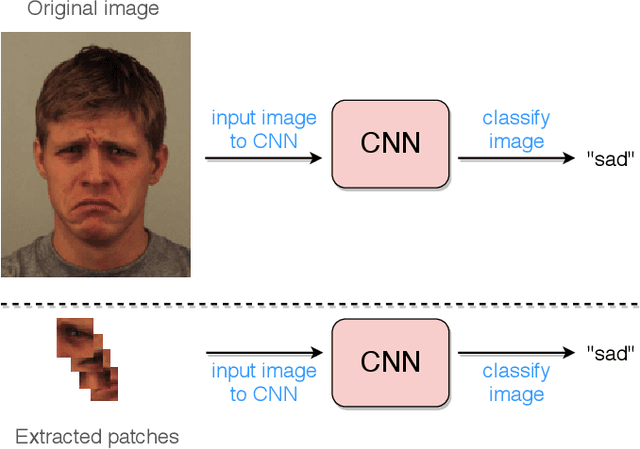
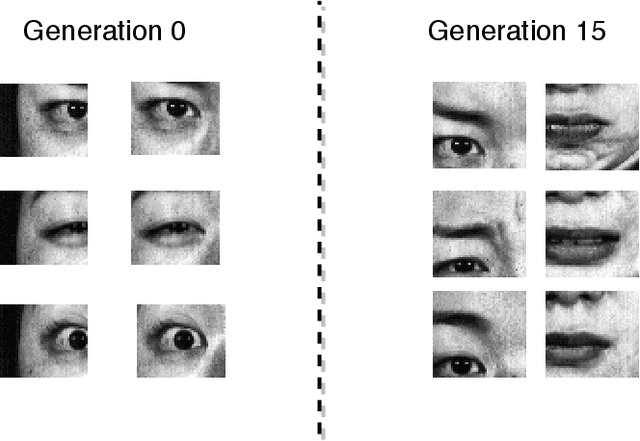
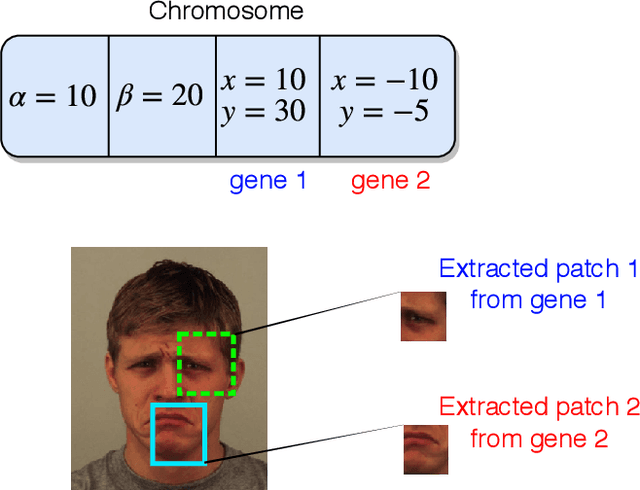
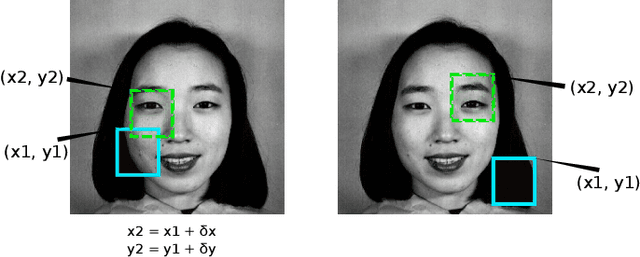
Abstract:Deep facial expression recognition faces two challenges that both stem from the large number of trainable parameters: long training times and a lack of interpretability. We propose a novel method based on evolutionary algorithms, that deals with both challenges by massively reducing the number of trainable parameters, whilst simultaneously retaining classification performance, and in some cases achieving superior performance. We are robustly able to reduce the number of parameters on average by 95% (e.g. from 2M to 100k parameters) with no loss in classification accuracy. The algorithm learns to choose small patches from the image, relative to the nose, which carry the most important information about emotion, and which coincide with typical human choices of important features. Our work implements a novel form attention and shows that evolutionary algorithms are a valuable addition to machine learning in the deep learning era, both for reducing the number of parameters for facial expression recognition and for providing interpretable features that can help reduce bias.
A Flexible Framework for Anomaly Detection via Dimensionality Reduction
Sep 09, 2019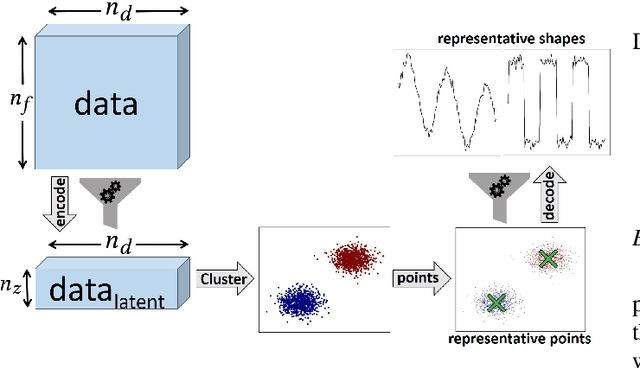
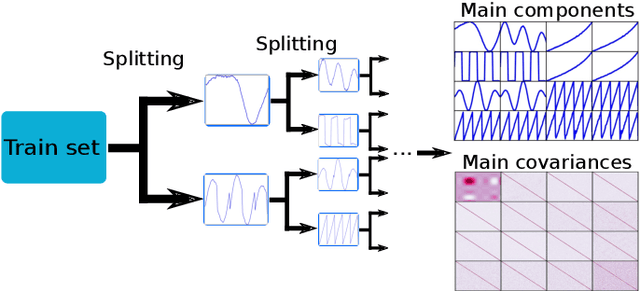
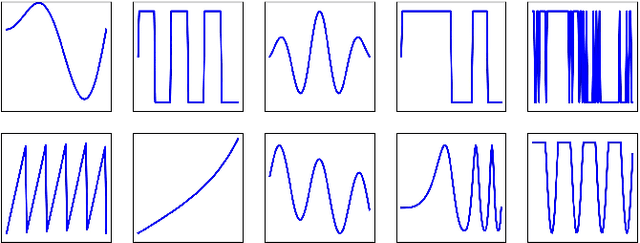
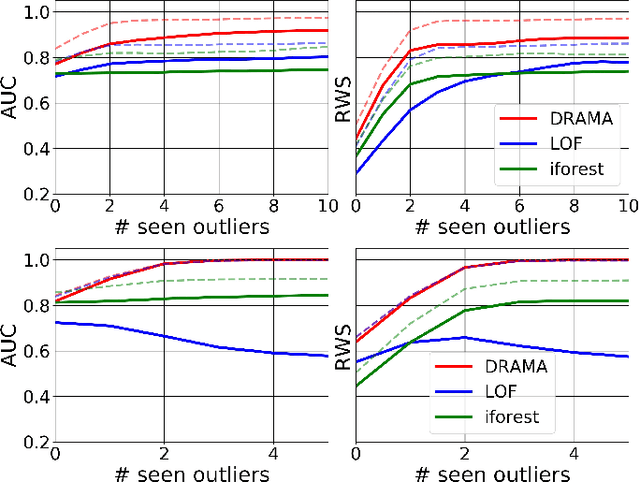
Abstract:Anomaly detection is challenging, especially for large datasets in high dimensions. Here we explore a general anomaly detection framework based on dimensionality reduction and unsupervised clustering. We release DRAMA, a general python package that implements the general framework with a wide range of built-in options. We test DRAMA on a wide variety of simulated and real datasets, in up to 3000 dimensions, and find it robust and highly competitive with commonly-used anomaly detection algorithms, especially in high dimensions. The flexibility of the DRAMA framework allows for significant optimization once some examples of anomalies are available, making it ideal for online anomaly detection, active learning and highly unbalanced datasets.
Bayesian Anomaly Detection and Classification
Feb 22, 2019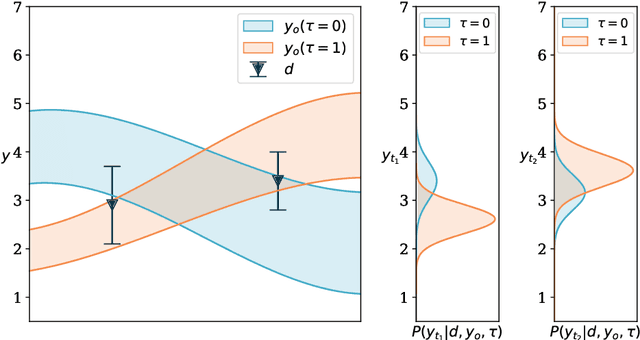
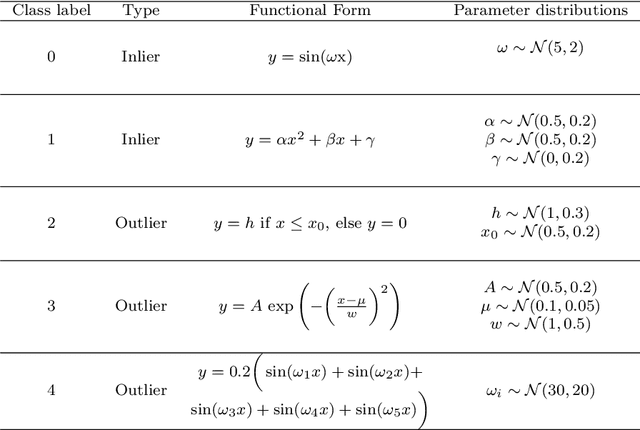
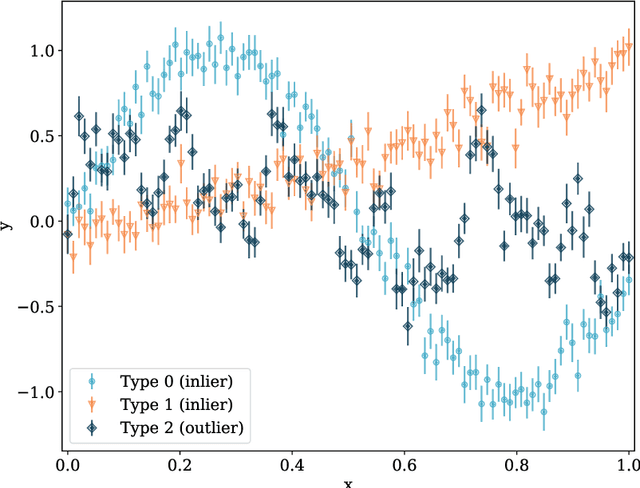
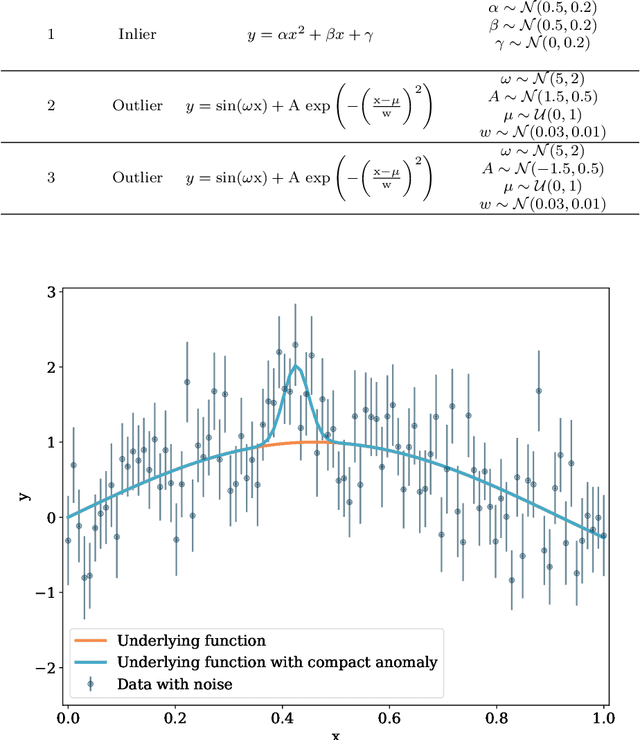
Abstract:Statistical uncertainties are rarely incorporated in machine learning algorithms, especially for anomaly detection. Here we present the Bayesian Anomaly Detection And Classification (BADAC) formalism, which provides a unified statistical approach to classification and anomaly detection within a hierarchical Bayesian framework. BADAC deals with uncertainties by marginalising over the unknown, true, value of the data. Using simulated data with Gaussian noise, BADAC is shown to be superior to standard algorithms in both classification and anomaly detection performance in the presence of uncertainties, though with significantly increased computational cost. Additionally, BADAC provides well-calibrated classification probabilities, valuable for use in scientific pipelines. We show that BADAC can work in online mode and is fairly robust to model errors, which can be diagnosed through model-selection methods. In addition it can perform unsupervised new class detection and can naturally be extended to search for anomalous subsets of data. BADAC is therefore ideal where computational cost is not a limiting factor and statistical rigour is important. We discuss approximations to speed up BADAC, such as the use of Gaussian processes, and finally introduce a new metric, the Rank-Weighted Score (RWS), that is particularly suited to evaluating the ability of algorithms to detect anomalies.
DeepSource: Point Source Detection using Deep Learning
Jul 07, 2018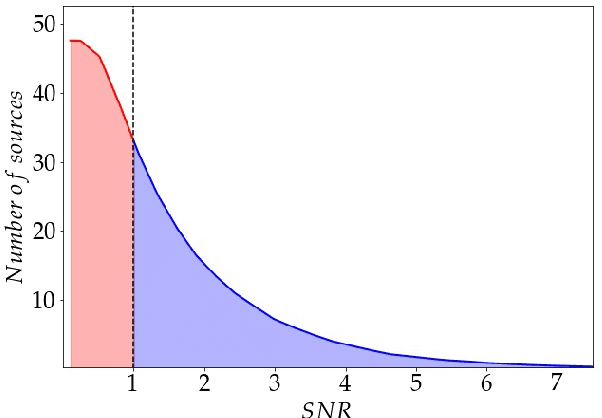
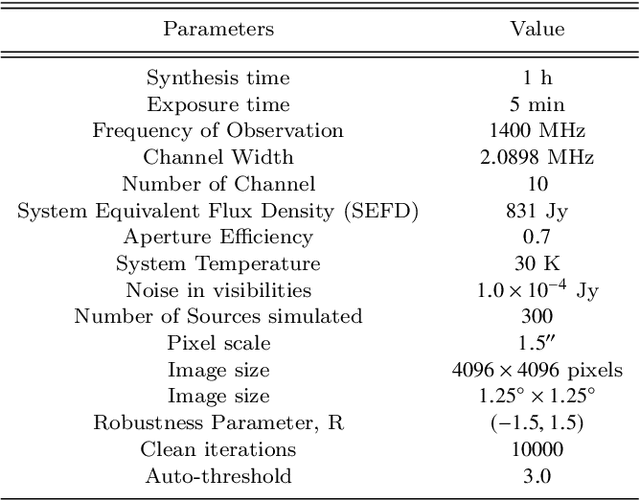
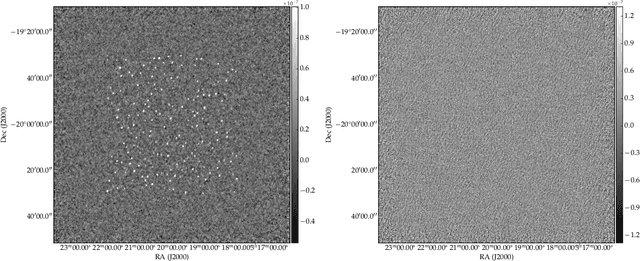

Abstract:Point source detection at low signal-to-noise is challenging for astronomical surveys, particularly in radio interferometry images where the noise is correlated. Machine learning is a promising solution, allowing the development of algorithms tailored to specific telescope arrays and science cases. We present DeepSource - a deep learning solution - that uses convolutional neural networks to achieve these goals. DeepSource enhances the Signal-to-Noise Ratio (SNR) of the original map and then uses dynamic blob detection to detect sources. Trained and tested on two sets of 500 simulated 1 deg x 1 deg MeerKAT images with a total of 300,000 sources, DeepSource is essentially perfect in both purity and completeness down to SNR = 4 and outperforms PyBDSF in all metrics. For uniformly-weighted images it achieves a Purity x Completeness (PC) score at SNR = 3 of 0.73, compared to 0.31 for the best PyBDSF model. For natural-weighting we find a smaller improvement of ~40% in the PC score at SNR = 3. If instead we ask where either of the purity or completeness first drop to 90%, we find that DeepSource reaches this value at SNR = 3.6 compared to the 4.3 of PyBDSF (natural-weighting). A key advantage of DeepSource is that it can learn to optimally trade off purity and completeness for any science case under consideration. Our results show that deep learning is a promising approach to point source detection in astronomical images.
 Add to Chrome
Add to Chrome Add to Firefox
Add to Firefox Add to Edge
Add to Edge